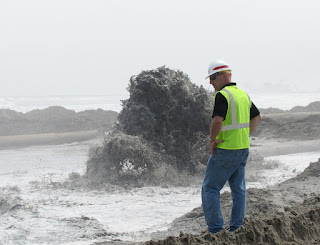Dutch Dredgers: Leading the Way in World Dredging
Dredging is an essential process for maintaining the navigability and safety of waterways, ports, and coastal areas around the world. Dutch dredging companies are globally recognized for their expertise and advanced technology in this field.
Dutch dredgers are responsible for some of the world's most challenging dredging projects, including the expansion of the Suez Canal, the construction of artificial islands in Dubai, and the reclamation of land in Singapore. Their experience and knowledge have been gained through centuries of working with water and mastering the art of dredging.
The Netherlands is a country that is heavily reliant on water for transportation, trade, and leisure. As such, the country has developed a unique approach to water management, including dredging, which is known worldwide for its effectiveness and sustainability. Dutch dredgers incorporate innovative techniques and use cutting-edge technology to minimize environmental impact and optimize the dredging process.
Dutch dredgers work all over the world, from the North Sea to Asia, Africa, and the Americas. They operate a range of dredging vessels, including hopper dredgers, cutter suction dredgers, and trailing suction hopper dredgers. Each vessel is tailored to suit specific dredging requirements, and Dutch dredgers pride themselves on their versatility and flexibility in meeting the needs of their clients.
The Dutch dredging industry is one of the most competitive and dynamic in the world, with a focus on innovation and continuous improvement. Dutch dredgers are constantly developing new techniques and technologies to enhance their performance and minimize their impact on the environment. They are at the forefront of the global dredging industry, providing high-quality services that help ensure the safety and sustainability of waterways and coastal areas worldwide.
In conclusion, Dutch dredgers are leaders in the world dredging industry, with their expertise, innovation, and sustainable practices setting them apart from other companies. They work all over the world, delivering high-quality services that are essential for maintaining the safety and navigability of waterways and coastal areas. If you require dredging services, you can trust a Dutch dredger to deliver efficient, effective, and sustainable solutions.
Ready for your dutch dredger? Feel free to contact us
✴ Read more about this post on:
https://www.oiltech.nl/en/link/dutch-dredgers
Post on
Linkedin









